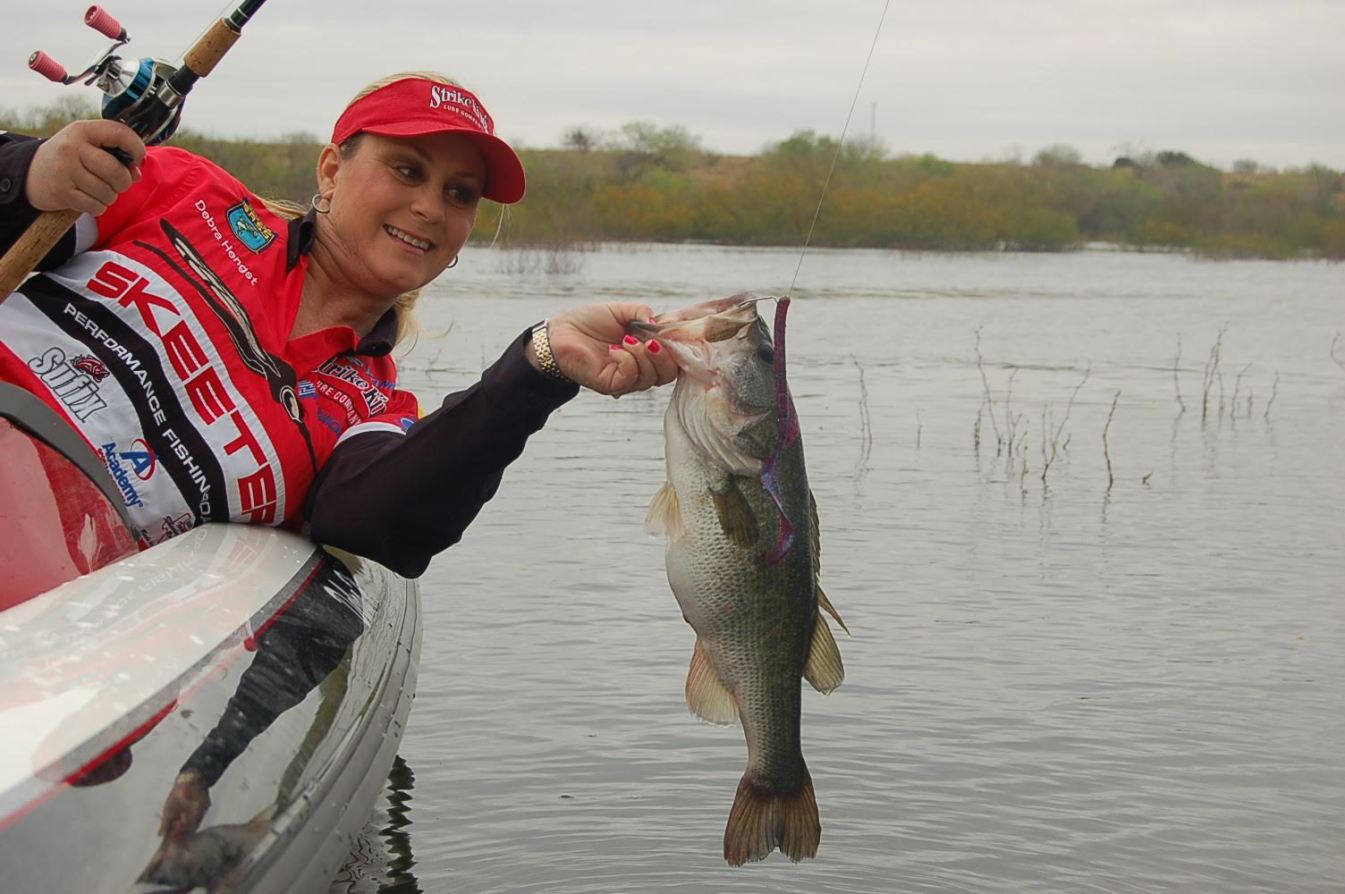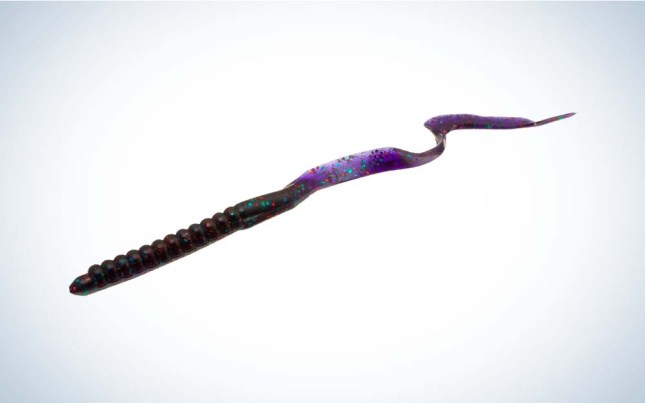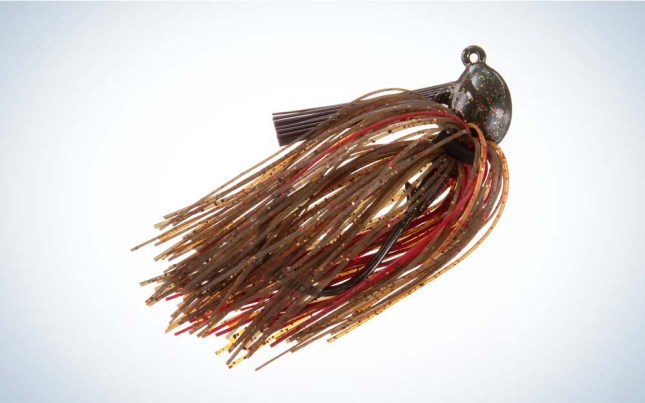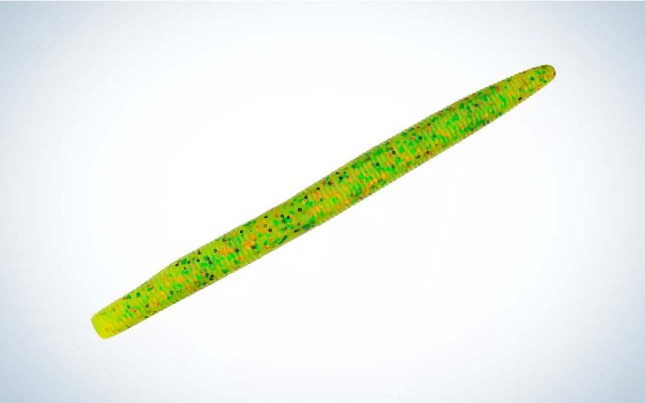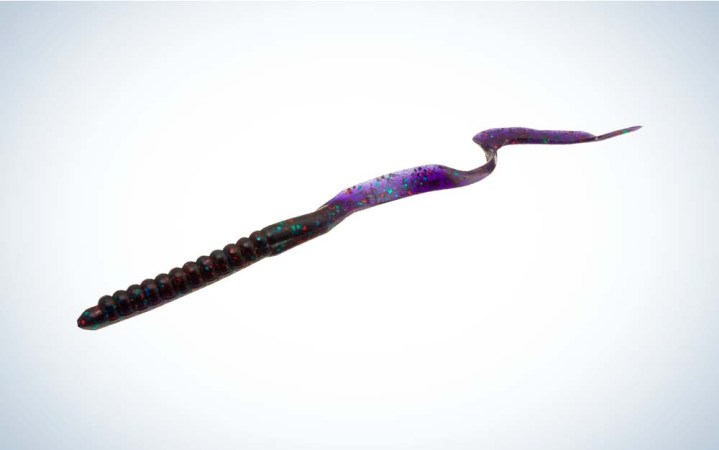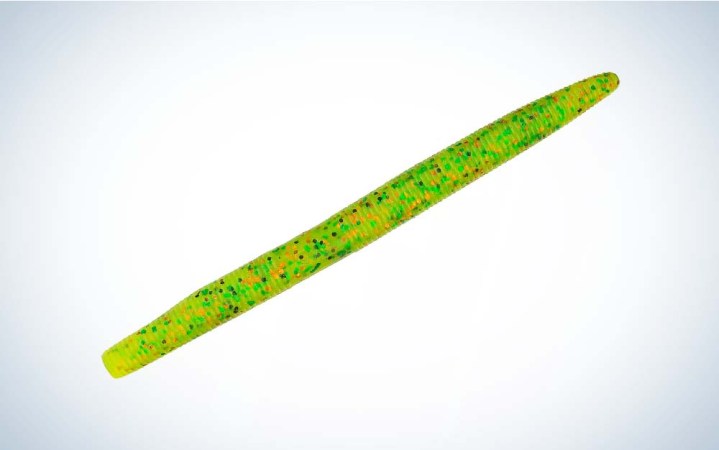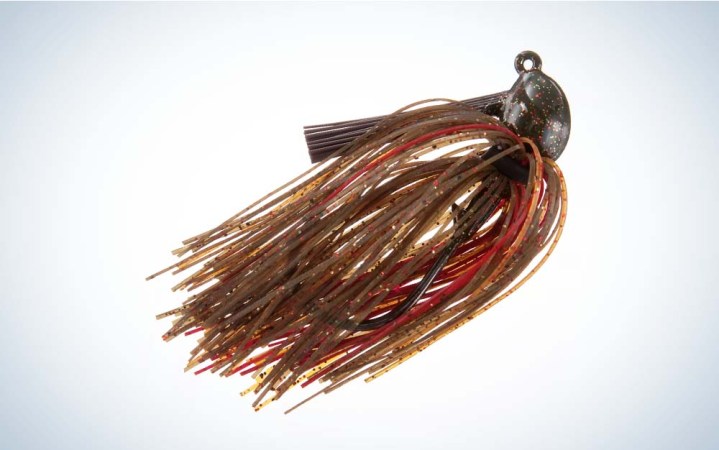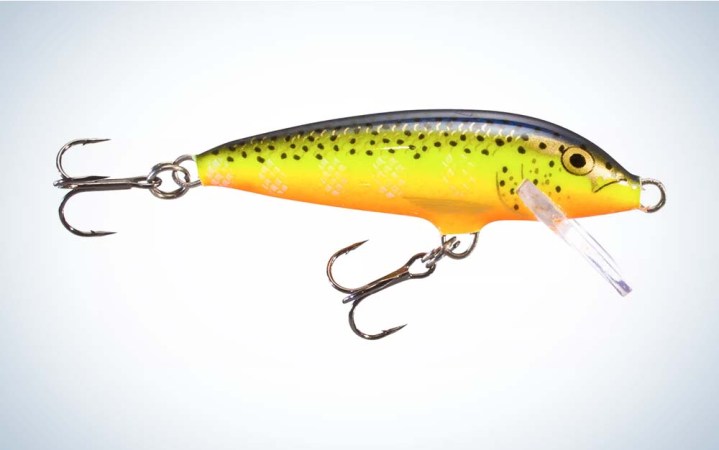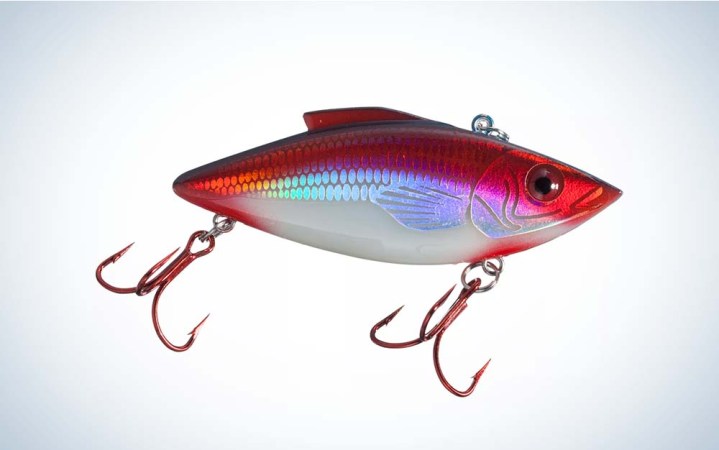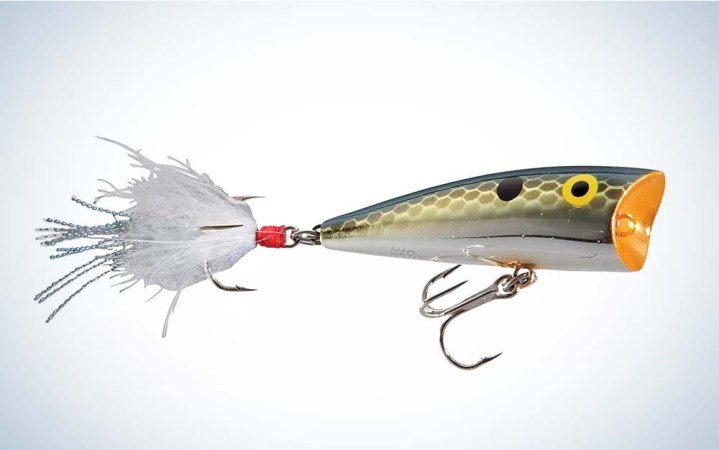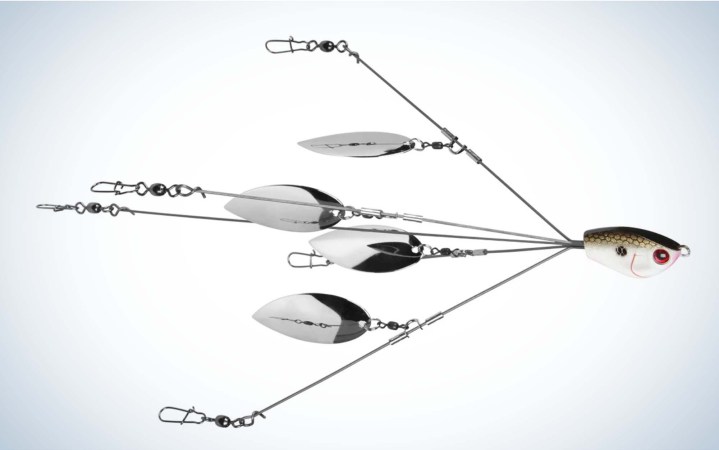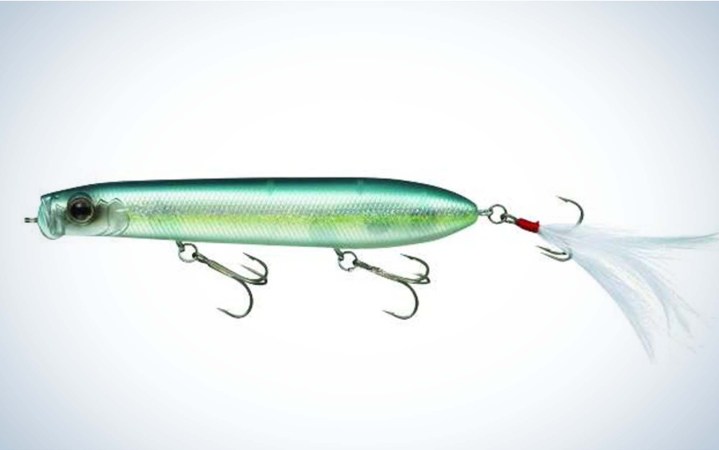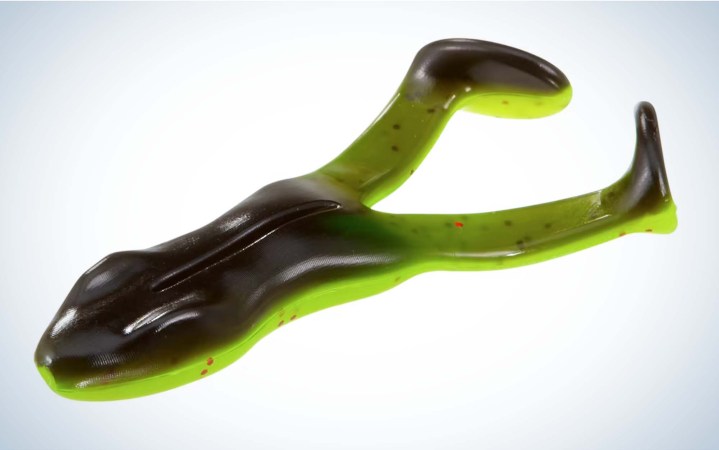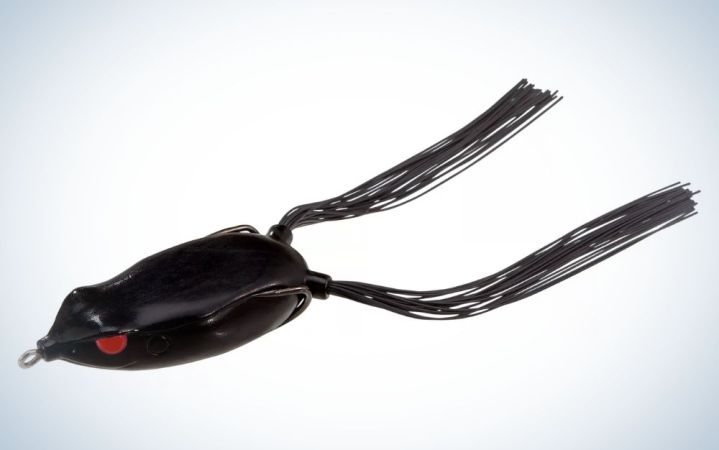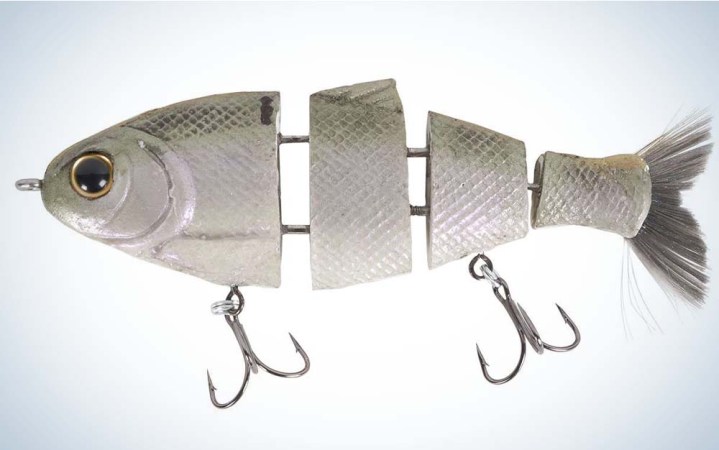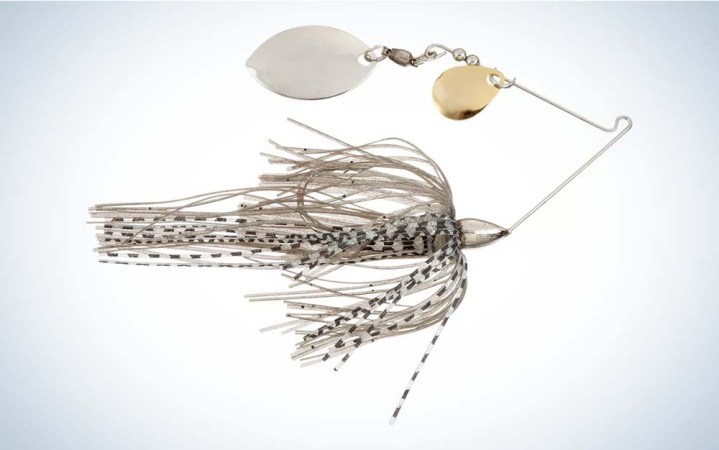We may earn revenue from the products available on this page and participate in affiliate programs. Learn More ›
The best bass lures are, of course, seasonally—and situationally—specific items, and things that no two anglers will agree upon. We all have our favorite confidence baits that we know will out fish the competition under the right circumstances. Furthermore, many more seasoned anglers would say that location, cadence, and depth matter far more than any specific offering. If you’re new to bass fishing, keep that in mind that as you stock your tackle box not everything is going to suit your style or location. My best bass lure picks are all proven fish catchers, but you still have to present them and know when to use the proper bait.
Nevertheless, fishing lures are tools, and some are simply better at a given task, or more versatile overall than others. Fortunately, the fishing industry contains some remarkably creative brains and better mousetraps are continually brought to market. Some of them work, others are less-than-revolutionary, but even the best of them eventually fade in effectiveness. If you were the first person to throw a Whopper Plopper or an Alabama Rig or a Chatterbait on your home lake, then you may have experienced some epic days, but eventually, the newness wears off and the results typically become a little bit less explosive. That’s what separates the all-time greats from the also-rans: they keep on producing through dozens, if not hundreds, of generations of bass. Here are some of our favorites and picks for the best bass lures of all time.
- Best Overall: Zoom U-Tale
- Best for Pressured Bass: Gary Yamamoto Custom Baits Senko
- Best for Heavy Cover: Strike King Hack Attack Heavy Cover Jig
- Best for Imitating Baitfish: Rapala Original Floating Minnow
- Best for Deep Bass: Hopkins Shorty Jigging Spoon
- Best for Covering Water: Rat-L-Trap
- Best for Heart-Stopping Strikes: Rebel Pop-R
- Best for Suspended Fish in Cold Water: Yum Flash Mob Umbrella Rig
- Best for Bass Chasing Herring: Evergreen Shower Blows Topwater Plugs
- Best for Covering Grassy Flats: Stanley Ribbit
- Best Frog: SPRO Dean Rojas Bronzeye Frog
- Best Swimbait: Triton Mike Bull Shad
- Best Finesse Spinnerbait: War Eagle Mike McClelland Finesse Spinnerbait
How We Picked the Best Bass Lures
It’s tough to come up with absolutes or universals when it comes to bass fishing, simply because of the diversity of the sport. Yes, a bass is a bass, but depending on where they live, what they eat, and the depths they inhabit, their behaviors and preferences can vary widely. That’s why we came up with a set of choices to cover the surface down to the deepest haunts that bass inhabit. Remember to think prey and water clarity first, and then location, but don’t sleep on lures that have proven their worth over the course of decades.
Best Overall: Zoom U-Tale
Key Features
- Size: 6 ¾”
- Distinguishing Characteristics: Segmented body and ribbontail
- Key Colors: Watermelon Red, Tequila Sunrise, Black
Pros
- Natural profile and movement
- Inexpensive
- Wide color array
Cons
- Not ideal for covering water
Product Description
If you don’t have a ribbontail worm — or a selection of ribbontails — in your boat ready to go right now, then stop reading this article and head to the store or make an online order ASAP. They can be fished ankle-deep on 60 feet down, they’re remarkably weedless and have the ability to be stealthy or gaudy, depending on how you manipulate them, which makes it a bait for all seasons.
U-Tale the best bass lure overall takes an age-old worm design and simply makes it more consistent. You’ll have confidence in them because it’s not much different than the worms that likely comprised your first selection of artificial lures. All you need to add are the appropriately-sized hook and sinker and you’re good to go for any season. The U-shaped tail wags seductively in even the slightest current, and the salt impregnation leads fish to hold on. Furthermore, it’s big enough to attract trophies, yet small enough that even a sub-legal fish will try to inhale it. With no negative cues to turn bass off or educate them, this flapping soft plastic will continue to work forever—just make sure to select one of the many color options that best match the local forage and works in the available water clarity.
Best for Pressured Bass: Gary Yamamoto Custom Baits Senko
Key Features
- Sizes: 3, 4, 5, 6, and 7 inches
- Distinguishing Characteristics: Cylindrical, pen-shaped body
- Key Colors: Black with blue flake, green pumpkin, watermelon red
Pros
- Great color selection
- Unmatched subtle wiggle
- Easy to rig
Cons
- Not particularly durable
Product Description
This simple stick of plastic may look like nothing found in nature, but something about its wiggle on the descent means that bass can’t leave it alone. You literally need to throw it out and let it fall on a semi-slack line to be effective, meaning that beginners can feel like world-beaters, but don’t think it’s anything other than a legit tournament tool as well.
When they were first introduced, the Senko was met mostly with blank stares. Anglers had been conditioned to think that a soft plastic needed a big wagging tail and multiple appendages to be effective. This proved them wrong. It can be rigged Texas style, or a Carolina Rig or on a dropshot, but its most deadly presentation might just be wacky rigged through the egg sack with no weight at all. It falls slowly that way, but even without any angler input, it taunts bass to bite. Miraculously, despite over two decades to reverse engineer the Senko, no competitor seems to have found a way to match its seductive action.
Best for Heavy Cover: Strike King Hack Attack Heavy Cover Jig
Key Features
- Sizes: 3/8, ½, ¾, 1, and 1 ¼ ounces
- Distinguishing Characteristics: Heavy-duty hook and weed guard
- Key Colors: Black/Blue, Candy Craw, Texas Craw
Pros
- Heavy duty construction
- Gamakatsu black nickel heavy wire hook with huge bite
- Easily penetrates heavy cover
Cons
- Heavy hook may struggle with monofilament or fluorocarbon (although there are similar models made for such uses).
Product Description
This one particular bass jig is a fairly recent addition and isn’t necessarily the original, but it’s emblematic of the genre, a lead head and skirt meant to penetrate thick cover. In this case, they’ve upped the ante with a gaff of a hook that stands up to vicious hook sets and braided line.
Whether it’s a jig and chunk or jig and craw, the simple lead head is a stalwart of heavy cover opportunities from the grass beds of Okeechobee to the thick buck brush of Texas. This is a jig that is extra durable, so not only can you put it in the nastiest possible places, but you can also be assured of extracting the giants who are often tempted to bite it. Fortunately, modern braided lines and sensitive graphite rods provide the complements that make this an efficient and tournament-proven system.
Best for Imitating Baitfish: Rapala Original Floating Minnow
Key Features
- Sizes: 1 ½, 2, 2 ¾, 3 ½, 4 3/8, 5 ¼, and 7 inches
- Distinguishing Characteristics: Tank-tested balsa wood balance
- Key Colors: Silver, gold, and rainbow trout
Pros
- Consistently run perfectly out of the package
- Quality balsa wood construction
- Wide range of sizes
Cons
- Minimal depth range
Product Description
Finnish angler Lauri Rapala’s creation was featured in Time Magazine in the early 1960s, and nearly 60 years later every decent tackle shop still has the Original floater on its shelves and every angler worth their salt has used one to catch bass. The tight, precision wobble and minnow-shaped body works everywhere.
When the Rapala lures first burst onto the scene they were so prized and scarce that anglers rented them with a refundable deposit in case of loss. They’re far more widely available today, but no less deadly. That’s largely because they run properly every time, and because their universal baitfish shape resembles a prime forage in just about every ecosystem holding bass. Young anglers beating the banks of farm ponds or wading shallow local creeks use them, and so do serious anglers chasing the fish of a lifetime. It’s the forerunner of every modern jerkbait, and while they don’t run deep, their side-to-side flash will call bass from a distance.
Best for Deep Bass: Hopkins Shorty Jigging Spoon
Key Features
- Sizes: 1/8, ¼, 3/8, ½, ¾ 1, 1 ½, and 2 ¼ ounces
- Distinguishing Characteristics: Hammered sides, baitfish shape
- Key Colors: Stainless steel, gold
Pros
- Inexpensive
- Falls quickly
- If snagged can usually be popped free
Cons
- Not great for horizontal presentations
Product Description
This simple hunk of lead with a treble hook affixed via a split ring represents a dying baitfish better than just about anything else available. By adjusting the size of the lure, the size of your line, and the aggressiveness of your jigging action, you can control the fall and trigger strikes.
There are plenty of quality jigging spoons on the market, and most of them don’t offer major differences. That’s the point, they’re not complicated. Simply find a piece of offshore structure that’s holding fish, drop it down to the bottom, and jig it in varying ways until you figure out what the fish want on that particular day. You may have to fight off a variety of other species to get to the bass, but again, that’s the point — it’s such a universal shape that just about everything that feeds on shad or other baitfish will succumb to its simple charms.
Best for Covering Water: Rat-L-Trap
Key Features
- Sizes: 1/8, ¼, ½, ¾, 1, and 1 ½ ounces
- Distinguishing Characteristics: Compact design, pointed at both ends with BB chambers
- Key Colors: Chrome/blue, Rayburn red, and gold
Pros
- Universal baitfish shape
- Wide range of colors and sizes
- Casts long distances, even against the wind
Cons
- Factory hooks may need to be replaced
Product Description
This simple lipless crankbait, an early model of a burgeoning category, and one of the first to become widely popular, calls bass with its tight wobble and heavy sound profile. From the earliest pre-spawn to the latest portion of the fall feed, it calls bass from a distance, and when run in front of their faces generates vicious strikes.
The original Rat-L-Trap has become the generic term for an entire category of lures, like “Coke” or “Kleenex,” and decades after its introduction, throwing a “trap” is still a viable way to catch bass in a wide variety of circumstances. Beginners can just lob it out and burn it back and expect to get bites, but in the hands of an experienced angler, it does so much more. Rip it free from submerged grass, yo-yo it over a hump, or kill it amongst dying shad, and you can expect to generate bites, often from the biggest bass around.
Best for Heart-Stopping Strikes: Rebel Pop-R
Key Features
- Sizes: 2, 2 ½, and 3 inches
- Distinguishing Characteristics: Cupped mouth can be “blooped” or chugged
- Key Colors: Bone, silver/black, and Tennessee shad
Pros
- Casts well
- No wrong way to work it
- Calls bass from a distance
Cons
- Not ideal 12 months out of the year in most places
Product Description
Rebel temporarily discontinued the Pop-R in the 1970s, until a group of Texas bass pros bought up all they could find — and started winning tournaments with them left and right — convinced them to bring the lure back. Nearly 50 years later it’s a stalwart, and while some purists modify them for particular uses, they’re deadly straight off the tackle store shelf.
While there are more modern and more refined poppers available, albeit, at a higher price point, the original Pop-R is still the standard for topwater poppers. You can throw it out, let the ripples dissipate, and then slowly pop it, or alternatively, you can skip it along the surface like a fast-fleeing shad. Anglers in Tennessee even pitch it into buck brush in places most of us would only throw a jig. When you get a strike you’ll know it, because the waters often part in a biblical fashion. Just make sure you invest in a good set of long-nosed pliers because you’ll often find this topwater hard lure in the back of your fish’s throat.
Best for Suspended Fish in Cold Water: Yum Flash Mob Umbrella Rig
Key Features
- Five wires for jig heads
- Available in a Junior size as well
- Willowleaf blades for extra flash
Pros
- Flashy blades attract fish in clear and stained water
- Can be fished at a wide range of depths
- Lifelike baitfish head
Cons
- May not be legal in some states
Product Description
The umbrella rig may look goofy out of the water, but under the surface it resembles a living, vibrating school of baitfish better than anything else. When the so-called “Alabama Rig” first came along, many of the competitors were both expensive and inconsistent, but Yum came along and made a quality product at a reasonable price. They even offer kits of jig heads and soft plastics to create a one-stop-shopping experience. Don’t forget to check the rules and regulations for your fisheries to make sure that a fully-rigged umbrella rig is legal where you chase bass.
Best for Bass Chasing Herring: Evergreen Shower Blows Topwater Plugs
Key Features
- Four sizes: 77.7, 105, 125 and 150 millimeters
- Ultra-natural color selections for clear water
- Premium rear feather treble
Pros:
- Larger sizes have three trebles to ensure maximum hookups
- Highly castable, yet buoyant
- Feathered rear treble attracts fish at rest
Cons:
- Pricier than most US domestic topwaters
Product Description
Multiple topwaters in one package, the Shower Blows can be walked or popped, but it’s best when skittered at high speeds for bass chasing schooled-up baitfish. The Shower Blows is a 21st century Japanese answer to the more primitive pencil poppers of the past, made with improved styling and components. While this style of lure is best known for their striper-tempting abilities, anglers in the Carolinas recognized that they’re also ideal for when largemouth and spotted bass are herding blueback herring. They can be cast a mile and retrieved at warp speeds without blowing out – while they can also be slowed down in the rare instances when fish strike and miss. There’s also a built-in tungsten weight system which helps casting distance and creates a fish-attracting knock for times when sight feeding alone is not the ticket.
Best for Covering Grassy Flats: Stanley Ribbit
Key Features
- Durable soft plastic construction
- 3.5” standard size (plus a larger “Bull” Ribbit)
- Stanley developed a double hook particularly for this body shape and size
Pros:
- Easy to fish “correctly” – cast it out, reel it back steadily
- Incredibly weedless
- Huge color selection
Cons:
- On some days the hookup percentage can be low
Product Description
The OG buzz toad still calls bass out from beneath the greenery and had just the right sound to provoke huge explosions. There are now lots of buzz toads on the market, but when the Ribbit first came out it was one of the few – and it nevertheless remains among the most beloved and most versatile. That’s because the boot-shaped tails can be made to gurgle in all sorts of seductive ways, from a steady pitter-patter to a hard-charging thump. Stanley has also taken the time to maximize their color selection, so whether you’re just trying to emulate amphibians or you want to replicate a bluegill, crappie, insect, or some other sort of forage, there’s a match for that situation. It’s big enough to take a variety of hooks, and slips over and through cover with ease, making it a true 4WD bass assassin.
Best Frog: SPRO Dean Rojas Bronzeye Frog
Key Features
- Lengths: 90 mm (3.5 inches), 65 mm (2.5 inches), and 60 mm (2.3 inches)
- Over 40 different colors from basics to forage-specific
- Soft, narrow body design
Pros
- Great range of colors
- Walks easily
- Skips well under overhanging cover
- High quality 2X Gamakatsu hooks
Cons
- After a number of fish sometimes takes on water
Product Description

This is the frog that truly changed the game for the vast majority of bass anglers, and while SPRO has enhanced the line with popping versions and other noisemakers, if you’re only going to get one frog, this is the one. Everything about it is premium, from the extra-strong Gamakatsu double hook that stands up to your hardest braided line hook sets, to the line tie, which is welded closed so that your braid will never slip out.
The living rubber legs match the many colors and are left extra-long so that you can trim them to your liking—some anglers like them short or uneven for better walking abilities. Anglers just starting out should favor black, white, and maybe a frog pattern, but some of the all-time great colors from SPRO include Killer Gill, Nasty Shad, and Red Ear. With those, you’re not just limited to imitating frogs and toads, but also all manners of baitfish.
When you’re learning how to fish a frog bait, one of the first skills is walking a frog. Creating the enticing side-to-side dance is exceptionally easy with the SPRO Bronzeye, which makes it one of the best frog lures for beginners and seasoned pros.
Read more about the best frog lures in our full review.
Best Swimbait: Triton Mike Bull Shad
Key Features
- Sizes: 4, 5, 6, 7, 8, 9, and 11 inches
- Triple-jointed
- Natural brush tail
Pros
- Runs true at any speed, even burning it
- Replicates a wide variety of baitfish
- Many size options
Cons
- Limited color options at basic price point
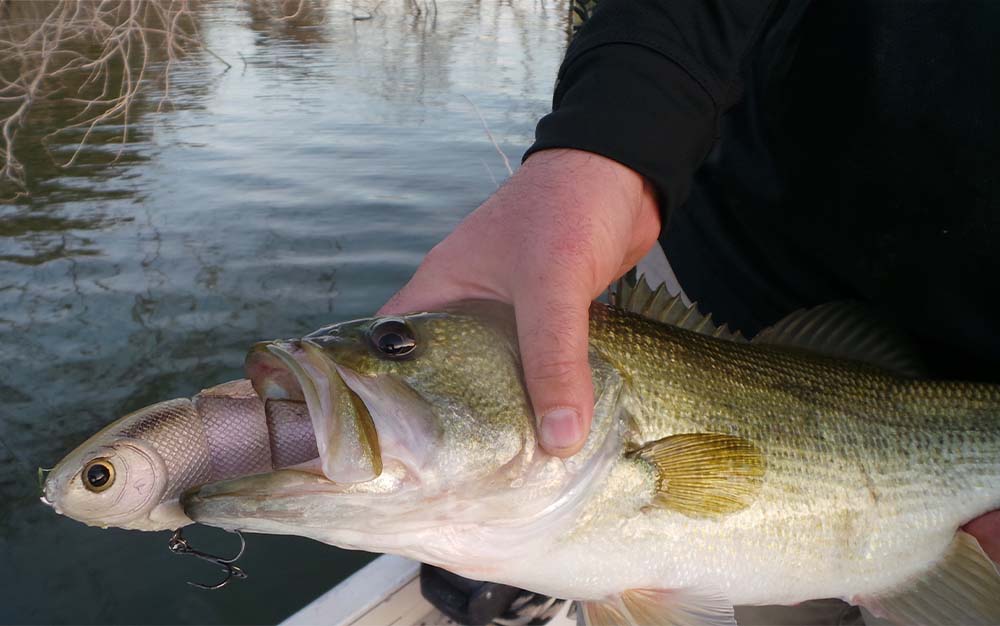
Product Description
At $50-100, the Bull Shad is a good entry into the world of high-priced prestige baits. The Bull Shad does the work of a spinnerbait and swim jig and often lands bigger fish than both. There’s no way to retrieve it incorrectly, but many of the most vicious strikes come when reeling it at warp speed. Smallmouths love it as much as largemouths. It also comes in a stubbier Bull Gill version and a more elongated Bull Herring version.
Read more about the best swimbaits in our full review.
Best Finesse Spinnerbait: War Eagle Mike McClelland Finesse Spinnerbait
Key Features
- 3/16 and 5/16 ounces
- Mustad Ultra Power Point Hook
- Sampo swivel
Pros
- Slides easily through cover
- Turtleback blade provides a lot of thump in a small package
- Premium components
Cons
- Thin wire is susceptible to breaking
Product Description
Arkansas pro Mike McClelland introduced the piano wire War Eagle spinnerbaits to the bass world in the late 90s with back-to-back Bassmaster wins. This small spinnerbait features a tiny Colorado blade paired with a slightly larger turtleback blade (sometimes called a “Mag Willow”) for lots of vibration without an overwhelming profile. War Eagle’s dual-length skirts mean they don’t require a soft plastic trailer, which might hamper the action of this diminutive lure. This spinnerbait is a great option when bites are hard to come by, but don’t be surprised if you hook a trophy.
Read more about the best spinnerbaits in our full review.
Things to Consider
No matter where you fish, it pays to get out of your comfort zone occasionally. Just because you’ve always caught bass on a particular lure, or a particular size or color of that lure, doesn’t mean that something else won’t work better. The sport is about windows of opportunity and maximizing those openings. The worst thing you can have is a closed mind. At the same time, by always having proven winners in the boat, when everything seems lost, or even slightly imperfect, you won’t have to question whether a particular offering has the chops to get the job done.
READ NEXT: Best Bass Fishing Tips
FAQs
A few more things to know about the best bass lures.
Rapala has made many great lures since they burst onto the bass fishing scene in the 1960s. But, if I had to pick just one Rapala it would be the Original Floating Minnow. The tight, precision wobble and minnow-shaped body works everywhere.
Bass can be found in six inches of water or 60 feet of water. They eat topwater lures, as well as lures dragged on the bottom. That’s why a bass angler should have lures that cover all areas of the water column, like the seven we discussed above.
The fishing lure that has probably caught more bass than any in history is a ribbontail worm — rigged Texas or Carolina style, it is an offering bass can’t ignore.
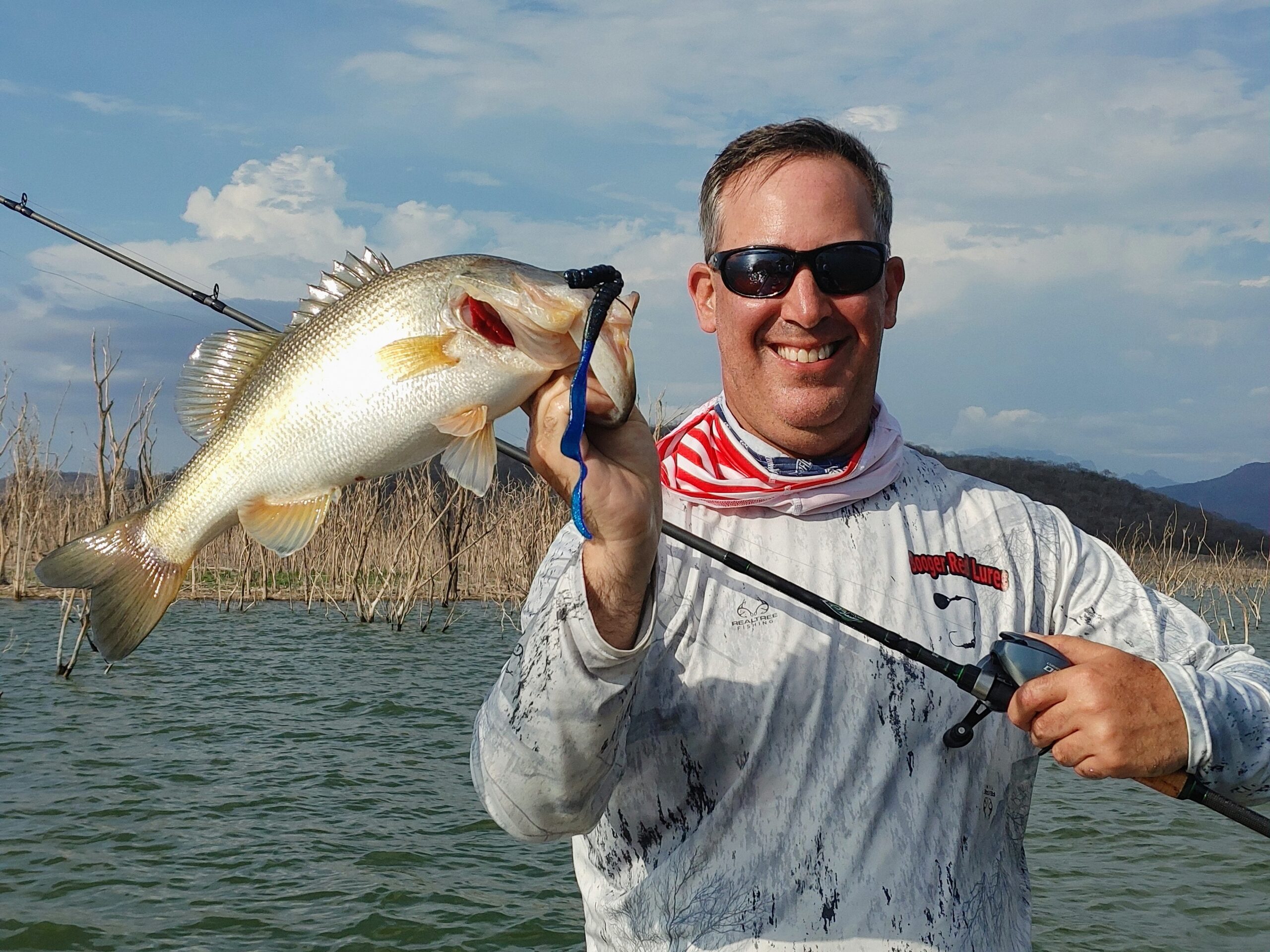
Why Trust Outdoor Life?
Since 1898, OL has been a leading authority in testing and reviewing hunting gear, fishing tackle, guns and shooting equipment, and much more. We have more than a century-long history of evaluating products, and we’re now bringing that expertise to online reviews. Our editors are experienced outdoorsmen and women, and most importantly, we’re trained journalists. We prioritize field testing and objective data when reviewing products. We conduct interviews with gear manufacturers and engineers as well as outdoor experts so that our readers have an understanding of how and why a product works—or doesn’t.
Advertising does not influence our gear reviews and it never will. While we always focus our coverage on standout products—because we want our readers to be aware of the latest and greatest gear—we also cover the flaws and quirks of any given product.
Read Next: Best Smallmouth Bass Lures
Final Thoughts on the Best Bass Lures
- Best Overall: Zoom U-Tale
- Best for Pressured Bass: Gary Yamamoto Custom Baits Senko
- Best for Heavy Cover: Strike King Hack Attack Heavy Cover Jig
- Best for Imitating Baitfish: Rapala Original Floating Minnow
- Best for Deep Bass: Hopkins Shorty Jigging Spoon
- Best for Covering Water: Rat-L-Trap
- Best for Heart-Stopping Strikes: Rebel Pop-R
- Best for Suspended Fish in Cold Water: Yum Flash Mob Umbrella Rig
- Best for Bass Chasing Herring: Evergreen Shower Blows Topwater Plugs
- Best for Covering Grassy Flats: Stanley Ribbit
- Best Frog: SPRO Dean Rojas Bronzeye Frog
- Best Swimbait: Triton Mike Bull Shad
- Best Finesse Spinnerbait: War Eagle Mike McClelland Finesse Spinnerbait
The basic plastic worm may not be as sexy as a topwater or as internationally significant as the Rapala Floating Minnow. Still, it’s a proven winner for largemouths, smallmouths, and spots and can be effective 12 months out of the year. Because it comes in such a wide range of colors, and you can use different lines, weights, and hooks to customize it, it’s the closest thing to a universal lure. That doesn’t mean that you can’t or shouldn’t carry other categories — most certainly, you should — but you shouldn’t leave home without a ribbontail.
